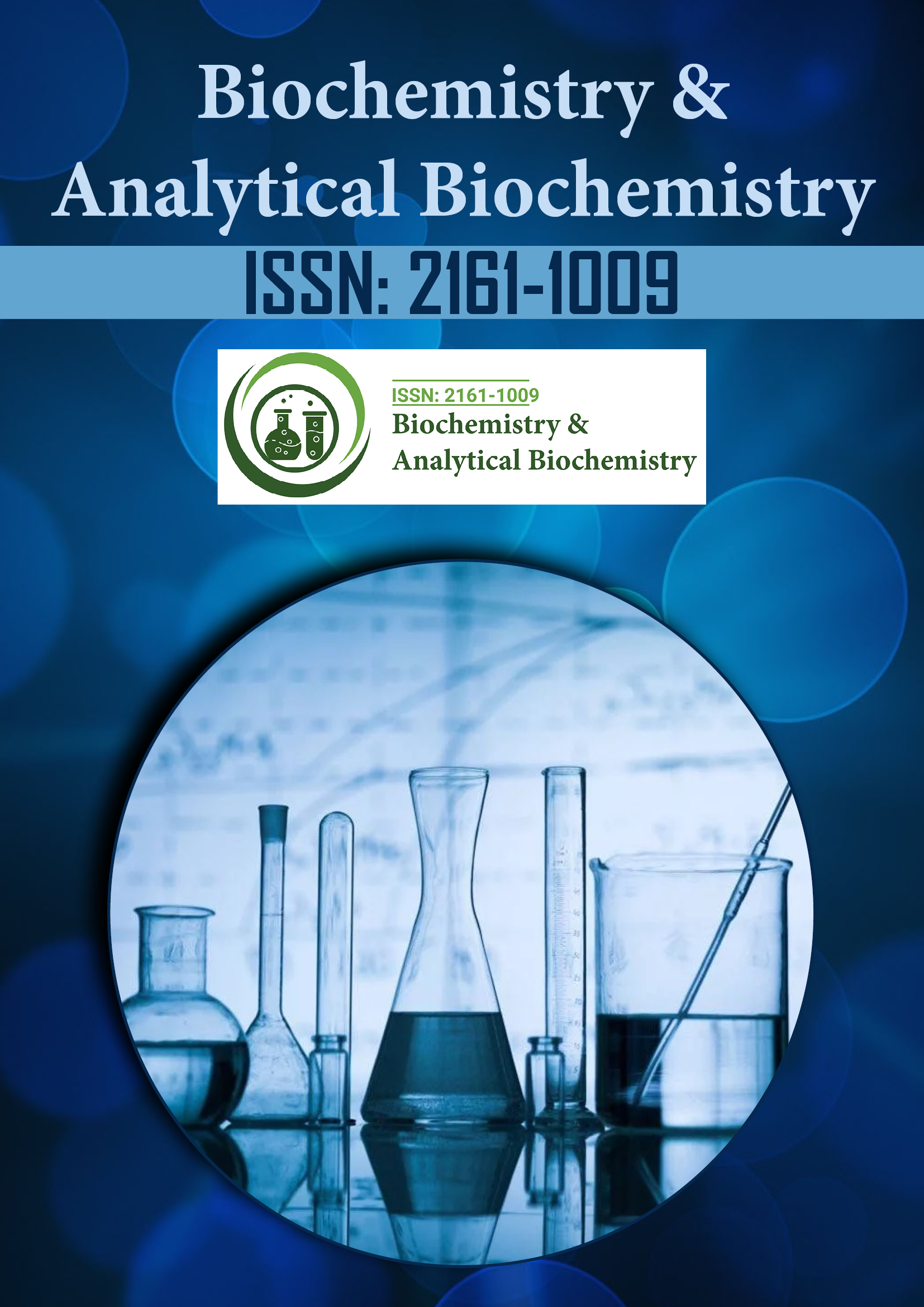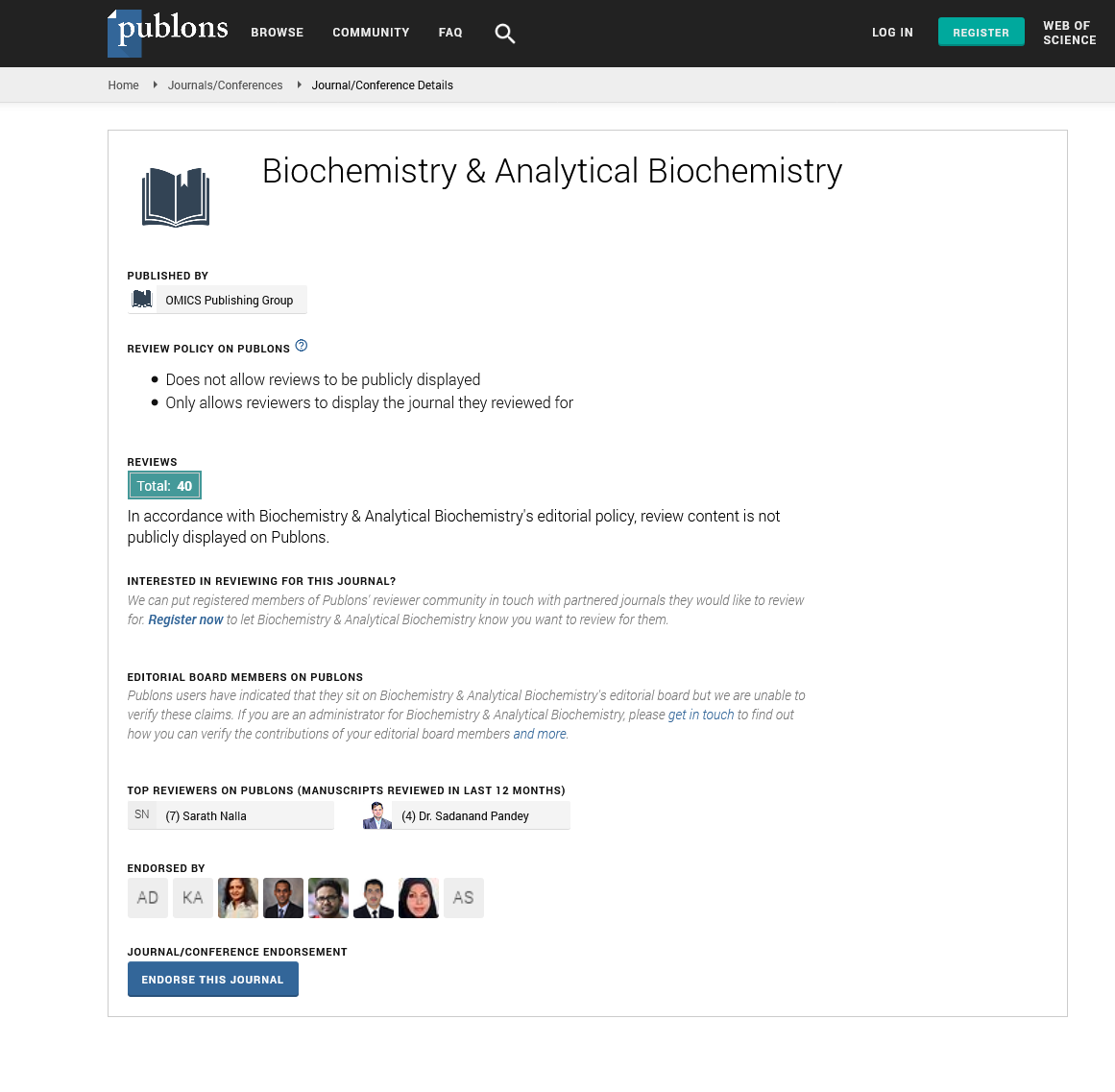Indexed In
- Open J Gate
- Genamics JournalSeek
- ResearchBible
- RefSeek
- Directory of Research Journal Indexing (DRJI)
- Hamdard University
- EBSCO A-Z
- OCLC- WorldCat
- Scholarsteer
- Publons
- MIAR
- Euro Pub
- Google Scholar
Useful Links
Share This Page
Journal Flyer

Open Access Journals
- Agri and Aquaculture
- Biochemistry
- Bioinformatics & Systems Biology
- Business & Management
- Chemistry
- Clinical Sciences
- Engineering
- Food & Nutrition
- General Science
- Genetics & Molecular Biology
- Immunology & Microbiology
- Medical Sciences
- Neuroscience & Psychology
- Nursing & Health Care
- Pharmaceutical Sciences
Opinion Article - (2025) Volume 14, Issue 2
Biochemical Mechanisms of Antioxidants in Mitigating Oxidative Stress-Related Disorders
David Kim*Received: 30-May-2025, Manuscript No. BABCR-25-29499; Editor assigned: 02-Jun-2025, Pre QC No. BABCR-25-29499 (PQ); Reviewed: 16-Jun-2025, QC No. BABCR-25-29499; Revised: 23-Jun-2025, Manuscript No. BABCR-25-29499 (R); Published: 30-Jun-2025, DOI: 10.35248/2161-1009.25.14.583
Description
The role of antioxidants in maintaining cellular homeostasis and protecting against oxidative stress-related disorders has long been a central theme in biochemistry and clinical research. Oxidative stress arises from an imbalance between Reactive Oxygen Species (ROS) production and the cellular antioxidant defense system, leading to molecular damage in proteins, lipids, and DNA. This damage is implicated in the pathogenesis of numerous conditions, including neurodegenerative diseases, cardiovascular disorders, diabetes, and cancer. Antioxidants, both enzymatic and non-enzymatic, serve as guardians against ROS, preserving cellular function and extending organismal health. However, the biochemical mechanisms through which antioxidants exert their protective effects are multifaceted, involving direct radical scavenging, metal chelation, modulation of redox signaling, and activation of gene expression pathways.
Enzymatic antioxidants such as superoxide dismutase, catalase, and glutathione peroxidase represent the first line of defense against oxidative stress. These enzymes operate in concert to detoxify superoxide radicals and hydrogen peroxide, two of the most prevalent ROS within cells. For instance, superoxide dismutase catalyzes the conversion of superoxide radicals into hydrogen peroxide, which is subsequently broken down by catalase into water and oxygen. Glutathione peroxidase further reduces hydrogen peroxide and lipid hydroperoxides using glutathione as a cofactor, maintaining membrane integrity and preventing lipid peroxidation. These enzymatic processes highlight how evolution has endowed cells with a sophisticated biochemical toolkit to counteract oxidative insults.
Non-enzymatic antioxidants, including vitamins C and E, carotenoids, and polyphenols, provide an additional layer of protection. Vitamin C, a water-soluble antioxidant, neutralizes free radicals in aqueous compartments, while vitamin E, being lipid-soluble, shields cell membranes from oxidative damage. Polyphenols derived from dietary sources such as fruits, tea, and wine have gained attention for their ability to modulate redox signaling pathways, influencing gene expression and cellular adaptation. Interestingly, the beneficial effects of antioxidants extend beyond simple radical scavenging. For example, many antioxidants act as hormetic agents, mildly activating stress response pathways that enhance resilience against future oxidative challenges. This dual role of direct protection and adaptive signaling underscores the complexity of antioxidant biochemistry.
The clinical relevance of antioxidants has been widely explored, yet outcomes of supplementation trials have often been inconsistent. While some studies show benefits in reducing cardiovascular risk or slowing neurodegeneration, others reveal no significant effect or even potential harm at high doses. These discrepancies highlight the importance of biochemical context and individual variability. Antioxidants in excess may disrupt physiological redox signaling, leading to unintended consequences. Thus, rather than indiscriminate supplementation, a more nuanced approach that considers dietary intake, genetic factors, and disease state is essential for optimizing antioxidant interventions.
Emerging research emphasizes the role of endogenous antioxidant pathways regulated by transcription factors such as Nrf2, which controls the expression of genes encoding detoxifying and antioxidant enzymes. Compounds that activate Nrf2, including certain phytochemicals, offer a promising therapeutic strategy by enhancing the body’s intrinsic defense system rather than relying solely on external antioxidants. This approach aligns with the growing recognition that targeting redox biology requires precision and balance rather than blanket supplementation.
In conclusion, the biochemical mechanisms of antioxidants reflect a finely tuned interplay between defense, adaptation, and signaling. Their protective roles are indispensable in combating oxidative stress-related disorders, yet their application in clinical settings requires careful calibration. Future biochemistry research must continue to unravel the complex dynamics of redox homeostasis, guiding the development of targeted therapies that leverage antioxidants’ full potential while minimizing risks. By deepening our understanding of these molecular guardians, we edge closer to harnessing biochemistry for the preservation of health and the prevention of disease.
Citation: Kim D (2025). Biochemical Mechanisms of Antioxidants in Mitigating Oxidative Stress-Related Disorders. Biochem Anal Biochem. 14:583.
Copyright: © 2025 Kim D. This is an open access article distributed under the terms of the Creative Commons Attribution License, which permits unrestricted use, distribution, and reproduction in any medium, provided the original author and source are credited.

